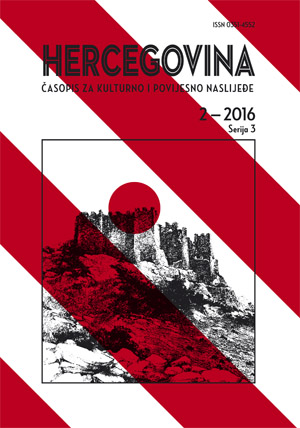Slikarski singularitet Ljiljane Rajković
Painting singularity of Ljiljana Rajkovic
Holocratic gravures and cyber landscapes in the cosmos invisible to the eye
Author(s): Antun KaramanSubject(s): History, Fine Arts / Performing Arts
Published by: Filozofski fakultet Sveučilišta u Mostaru
Keywords: Ljiljana Rajkovic; painting; traditional art forms; modern technology; integration of science and art; holocratic gravures; cyber landscapes; abstractions.
Summary/Abstract: In our modern time art, as a cultural activity that is less required for living in a consumer society (it is easier to understand and sell fake rather than authentic art) is pushed to the margins.Such an attitude towards art is not only a fault of society imbued with consumer habits and the desire for seductive glitter (instead of real values), but also the artists themselves who, in order to save profit and (currently) more comfortable life, often for little money or for a short-term personal "quasi" prestige, engage in cheap production bravura, which, generally devoid of real artistic charge, values and meaning, usually end badly both for the artists who created them and the art itself. Also, something that is equally detrimental to art is that artists, in the heat of self-sufficiency, often tend to deny or disparage all visual arts phenomena other than those they consider as only important. For this reason, both art and society remain impoverished but often devoid of those artistic endeavors that do have meaning and reason to be achieved. Ljiljana Rajkovic, well aware of the hard reality of art, aims her artistic work to point out the problem and offer a solution. Drawing on the experience of earlier art (mathematics and statics in the Gothic style, the defining role of geometry in the Renaissance, Michelangelo's crystals, Leonardo and Dürer's exploration of reality, etc.) and closer to us modern history (Bauhaus, De Stijl, Le Corbusier and others) when art, relying on science and technology, high-elevating ethical and social principles, advocated (unfortunately unrealized) changes in society, she advocates restoring of close discourse among science and art, or discourse in which there would be no winners or the injured parties - the artist's conception and synergic relationships of science to art could give or take something from each other. Art could use inputs from technology, which develops on a daily basis, while science, touched by the breath and spirit of art, would gain a greater possibility of ethical upgrade of its system of values, often exposed to aggressive investors who mind only for money, whereas morality and ethics are considered a burden which you have to quickly get rid of. In consideration of her artistic path and creation Ljiljana Rajkovichas found inspiration in scientific theories, especially those that gave rise to the theory of relativity and quantum physics, which have fundamentally changed our knowledge of matter, its structure and internal organization, in energetic view established to allow hitherto scientifically profane speculations about connecting and interacting of mental impulses and material substantiality of substance. Without abandoning the traditionally based painting and connecting it with the technical possibilities of modern technological apparatus, Rajkovic in her own example shows that connection between art and science is possible. She is primarily interested in the effects of light and structure, but also in the structural complexity of the matter itself, no matter where it is perceived:this may be materiality of subatomic structure of matter, or the infinite amount of material scattered in unreachable areas of the universe. Knowledge that Rajkovic reaches in her observations is transferred into her works of art - holocratic gravures, cyber landscapes, crystal lattice, colored light bursts,black holes and the like - abstract images which, colored with tacit kaleidoscopic light, offer poetic dreaminess that the painter's perception heated by scientific theorems rounds or builds up appropriately.
Journal: Hercegovina. Časopis za kulturno i povijesno naslijeđe (Do 2018)
- Issue Year: 2016
- Issue No: 2
- Page Range: 319-339
- Page Count: 21
- Language: Croatian

